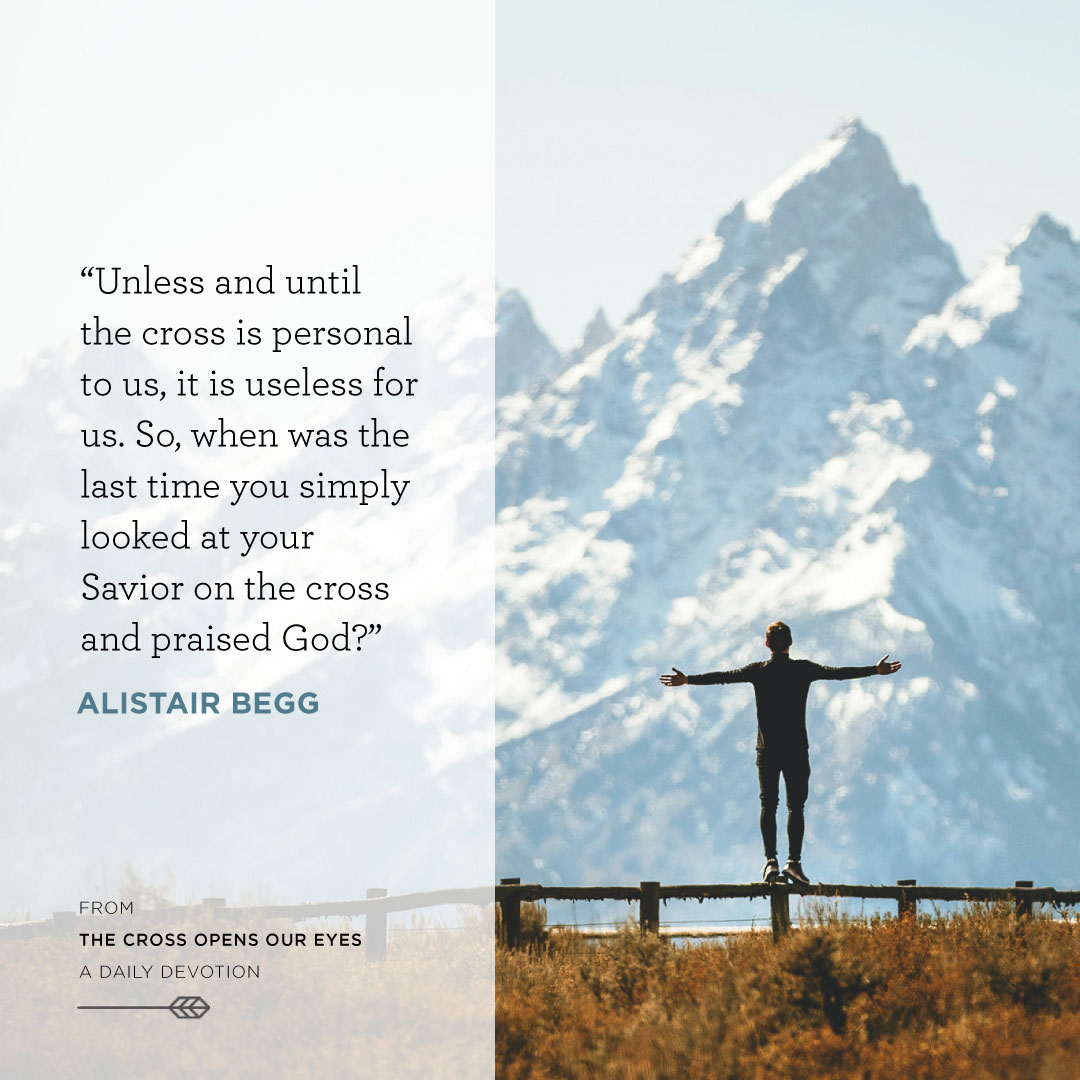The Man on the Middle Cross: A 7-Day Easter Reading Planنموونە

THE CROSS OPENS OUR EYES
“When the centurion saw what had taken place, he praised God, saying, ‘Certainly this man was innocent!’” LUKE 23:47 (ESV)
We have not understood the cross unless it has changed us personally.
After Jesus “breathed his last” (Luke 23:46), Luke records for us the reactions of those who witnessed the crucifixion. “All the crowds that had assembled for this spectacle, when they saw what had taken place, returned home beating their breasts” (v 48). Yes, there was sadness, but once the spectacle was over, they left to get on with their lives. Verse 49 then informs us that “all his acquaintances … stood at a distance watching,”—and we can only imagine what was running through their minds. But the most striking and the most personal reaction that Luke captures is that of the Roman centurion, who, seeing what had happened, “praised God, saying, ‘Certainly this man was innocent!’”—or, as the NIV renders it, “Surely this was a righteous man.”
Here, amid the darkness of hypocritical religious leaders, cynical rulers, and callous passersby, is a glimmer of light. Perhaps the last person we would expect to see the truth—a man with no previous connection to Jesus, no background in Old Testament studies, and no predisposition to the things of God—not only grasped what he was looking at but responded personally to it. He saw “what had taken place”—the words of Jesus, the darkness overhead, the manner of His death—and realized, Here is no ordinary man. Here is a man who is different from every other man. Here is a man who is entirely innocent, wholly righteous. Indeed, Mark adds that the centurion confessed that the man on the cross was “the Son of God” (Mark 15:39).
With his eye for detail, Luke places a clear emphasis on seeing what took place on the cross. He probably hoped that some readers would remember that when Jesus had read from the scroll of Isaiah earlier in His ministry, He had said, “The Spirit of the Lord … has anointed me to proclaim good news to the poor … to proclaim liberty to the captives and recovering of sight to the blind” (Luke 4:18). Indeed, a great theme found throughout the Gospel of Luke is that of darkness being invaded by light—the confusion and hardness of people’s hearts and minds being invaded by the liberating power of God’s truth.
Any attempt to articulate Christianity that denies the centrality of the cross can never lead to saving faith. And while we do not always understand how the Spirit moves in leading men and women to be born again, our message must always and ever be the same: “Christ crucified” (1 Corinthians 1:23). It is beholding the cross that brings life for anyone who responds to the man who hung there by confessing who He is and praising God for His saving work. Unless and until the cross is personal to us, it is useless for us. So, when was the last time you simply looked at your Savior on the cross and praised God?
- How is God calling me to think differently?
- How is God reordering my heart’s affections—what I love?
- What is God calling me to do as I go about my day today?

Scripture
About this Plan

Nearly everyone agrees that this world is broken. But what if there’s a solution? This seven-day Easter plan begins with the unique experience of the thief on the cross and considers why the only real answer to brokenness is found in the execution of an innocent man: Jesus, the Son of God.
More
پلانە پەیوەستەکان

Discover the Gospel of Mark in 3 Weeks

Church & Students

7 Days of Powerful Prayer and Fasting

The BEMA Podcast: Session 1

Good Faith

I Can and I Will Through God’s Power - 7 Ways to Live Boldly for Christ by Ayub Paul

Charis Bible College Fall Bible Reading Plan

Leading Well: 5 Choices for Christian Leaders a 5 - Day Plan by Michele C. Walker, Ph.D.

Gratitude
